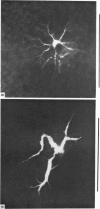Abstract
1. Two classes of luminosity horizontal cells have been identified in the retina of the turtle by intracellular recording. These cells differ in the area of retinal surface over which they are sensitive to light. For moderate light intensities the maximum response amplitude of `type I' cells increases progressively as the radius of a circle of light is enlarged to over 750 μm. Responses of `type II' cells instead reach maximum amplitude with circular illumination of about 300 μm radius.
2. Both types are maximally sensitive to red light and have similar action spectra.
3. The cells from which these responses originated were identified by intracellular marking with Procion Yellow dye. Both types were located in the inner nuclear layer. Type I cells had asymmetric, thick, tuberous processes and no apparent discrete somata. Type II cells had thin processes radiating symmetrically from rounded cell bodies.
4. The different properties of the two types of cells can be simply explained assuming that the cells of type I are coupled by low-resistance electrical junctions while in cells of type II the junctional resistance is higher.
5. Since type I and type II cells differ both morphologically and physiologically, they may have different functions.
Full text
PDF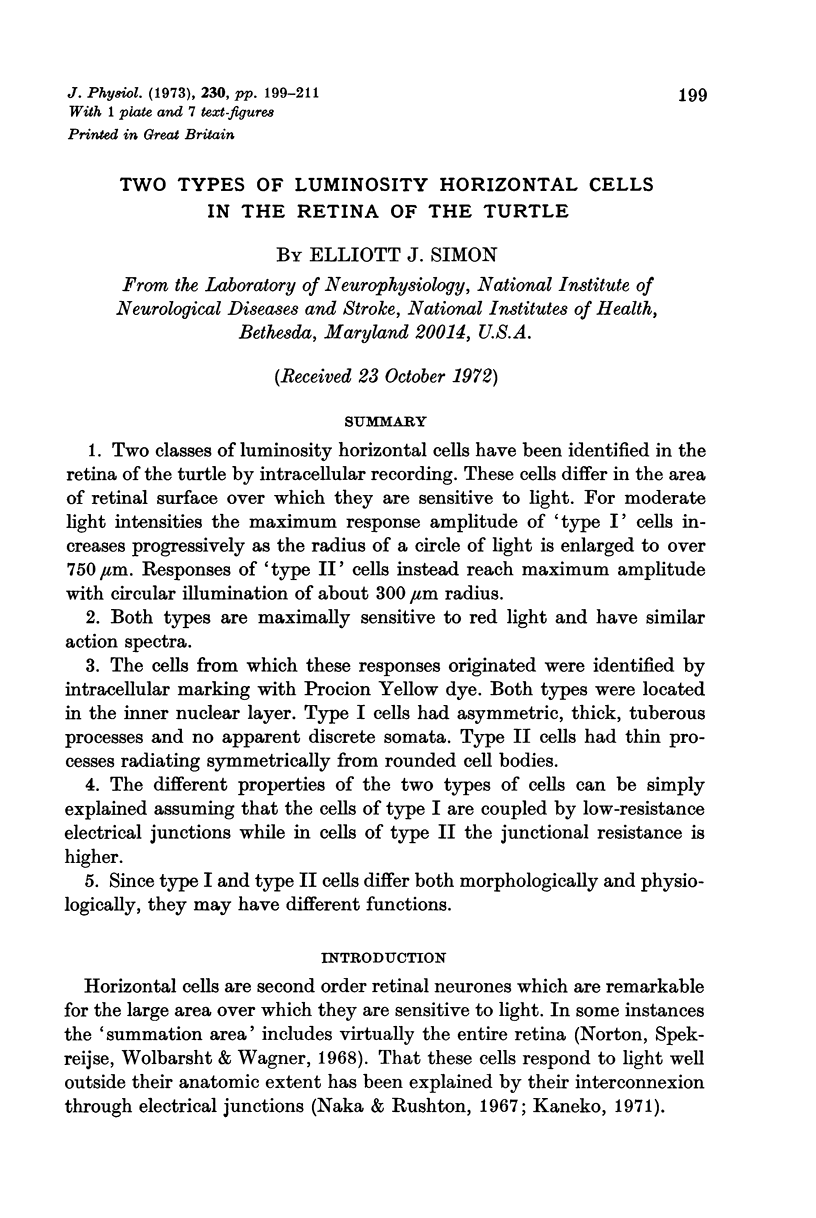
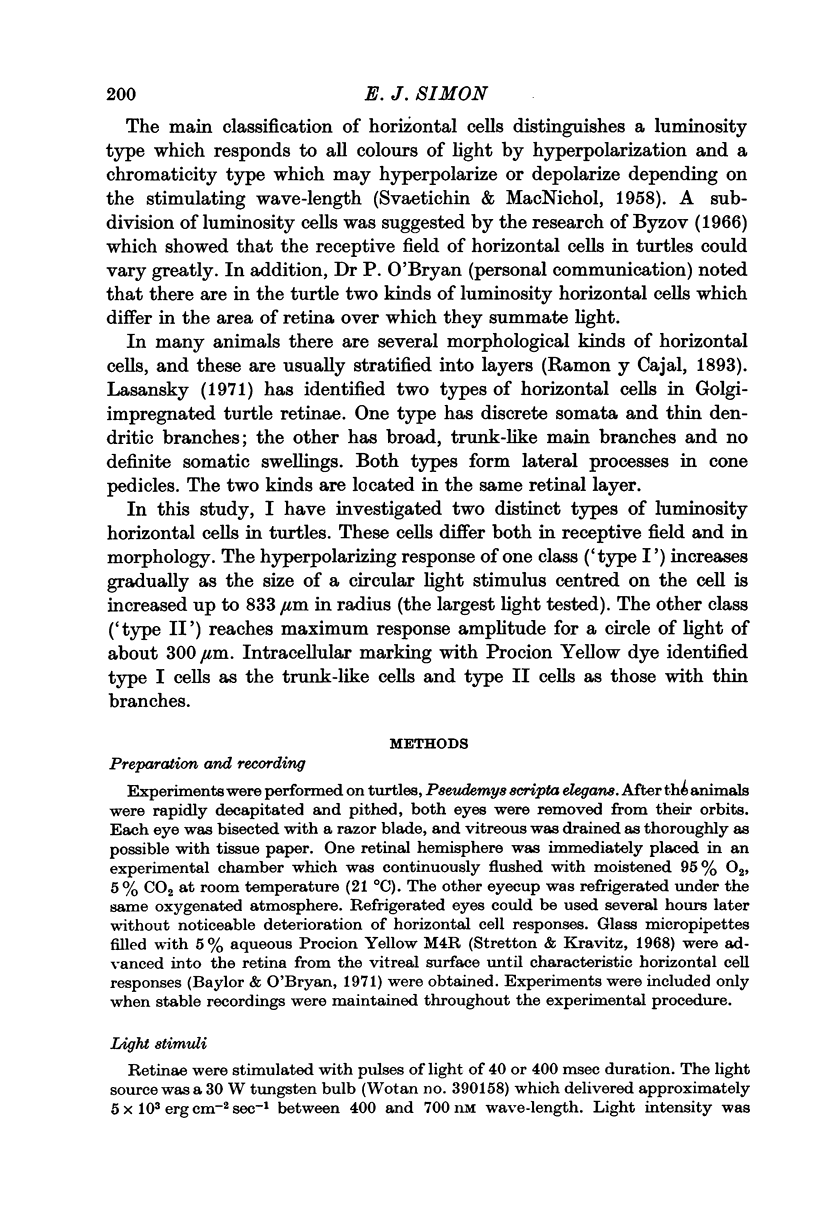
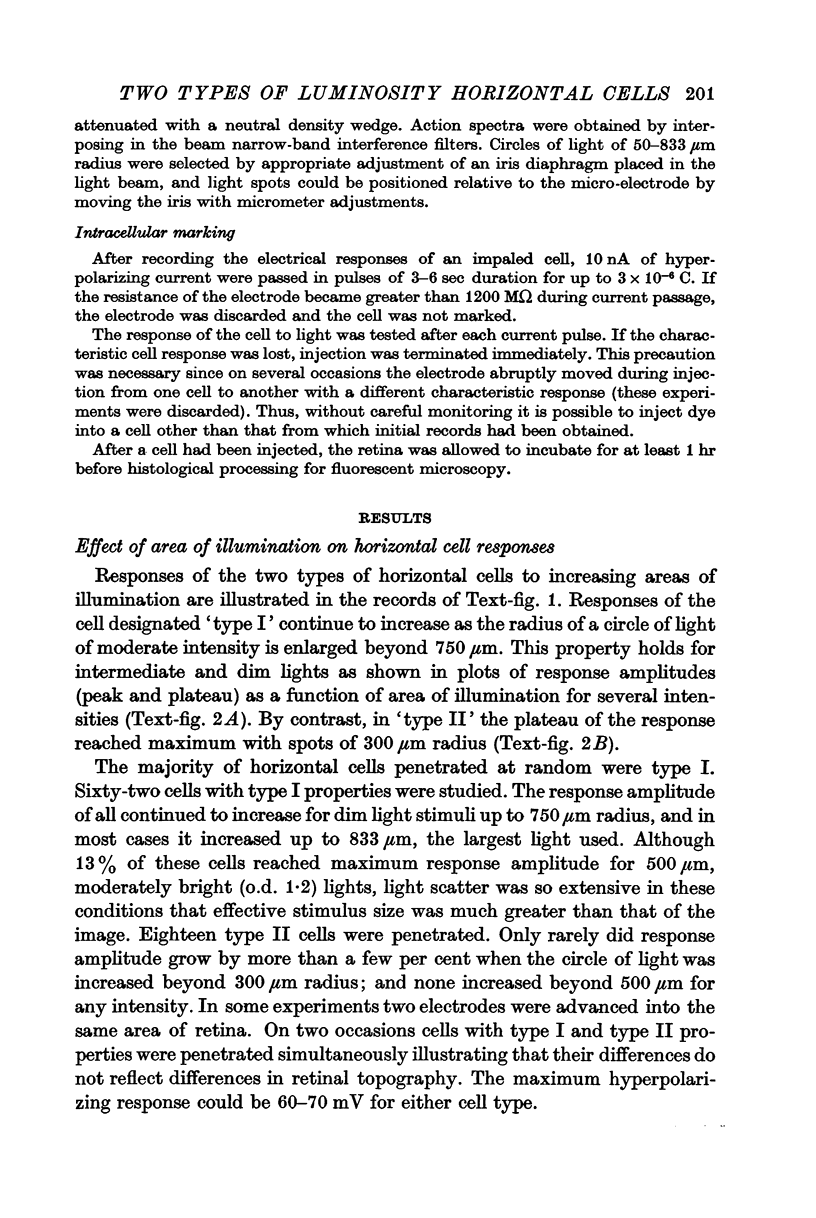
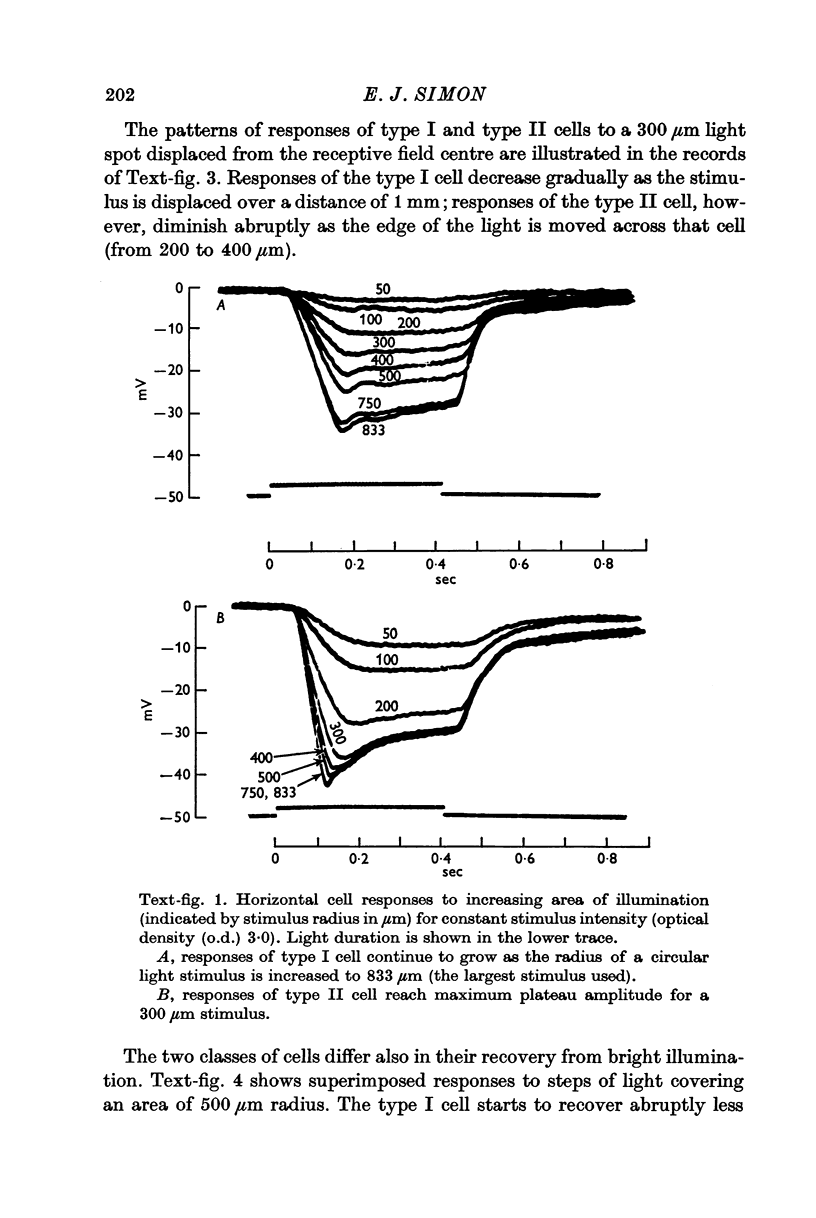
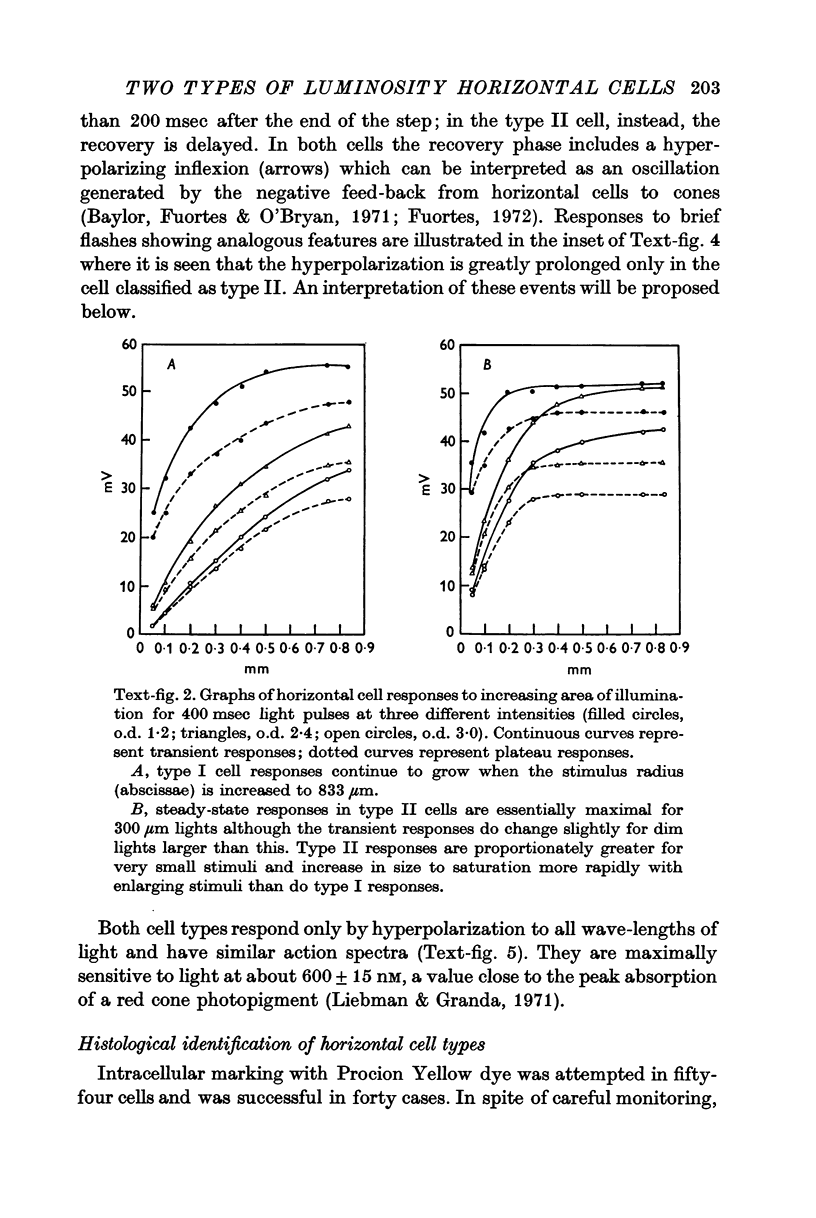
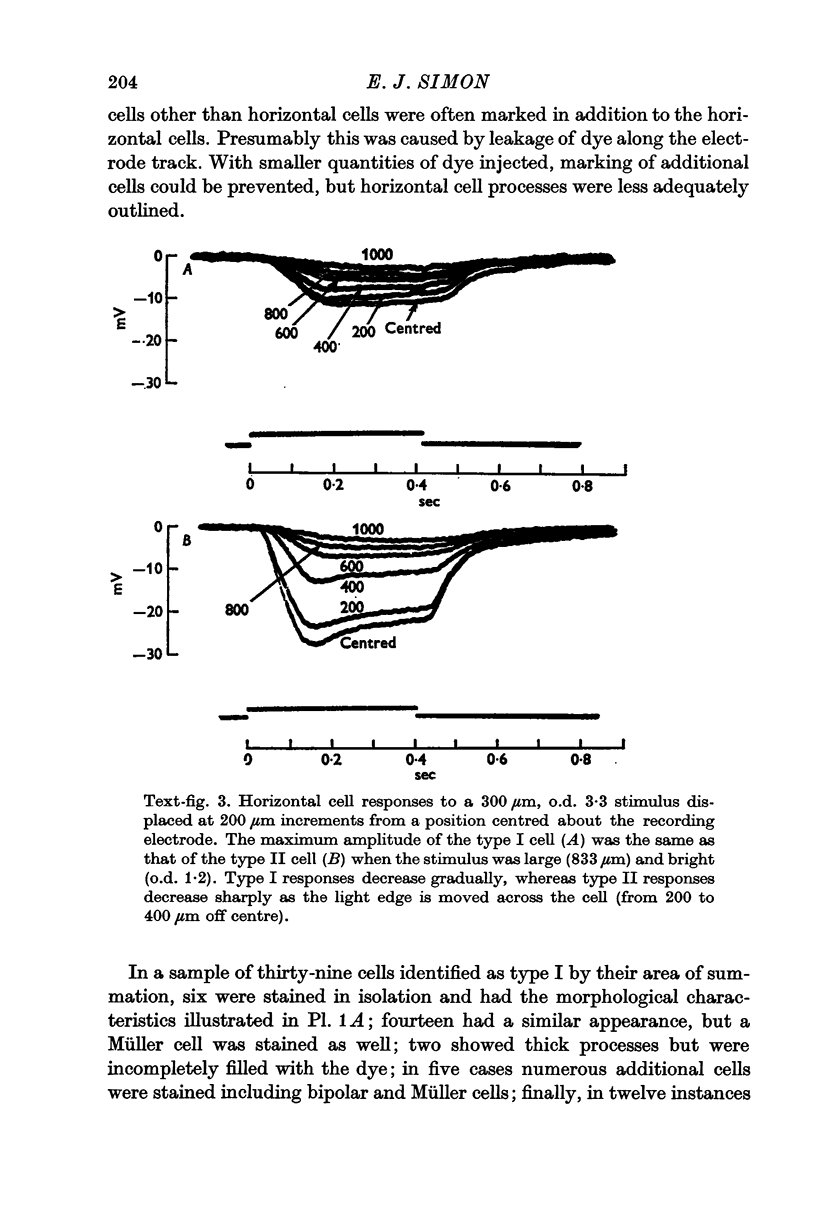
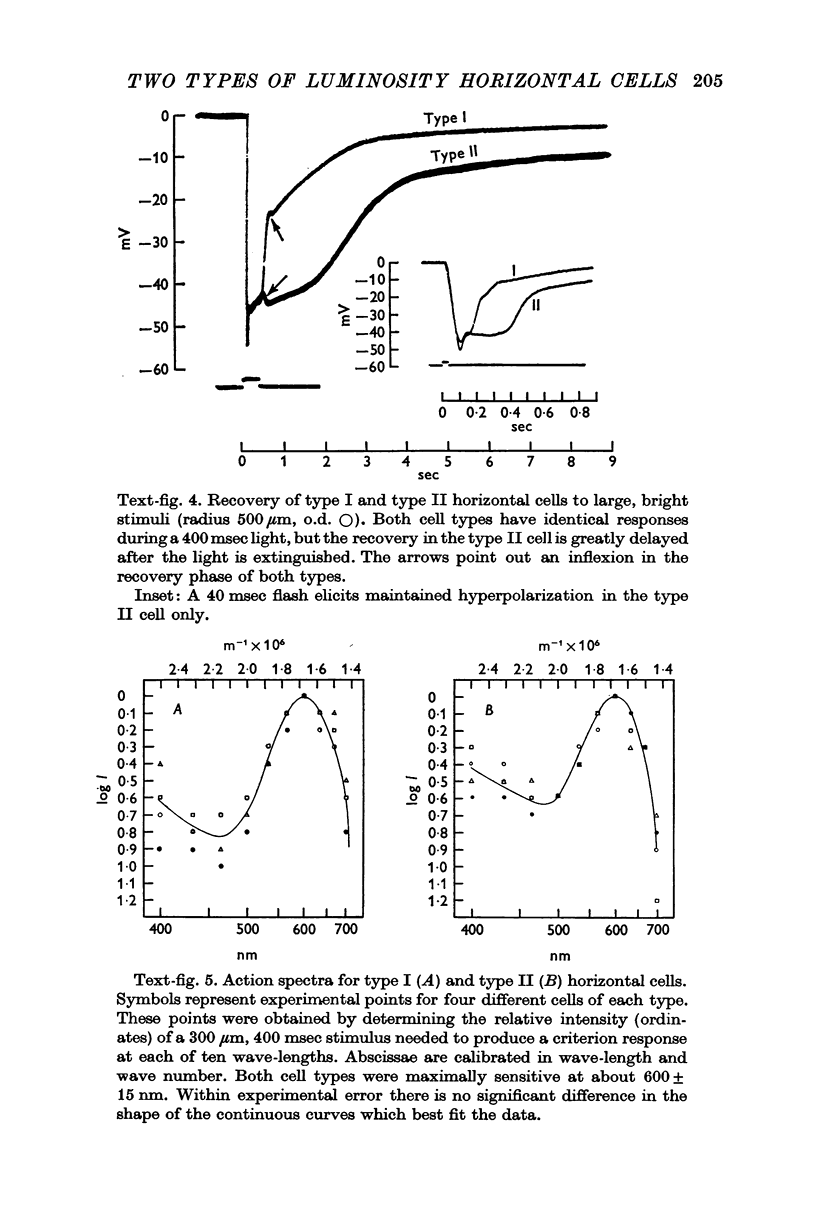
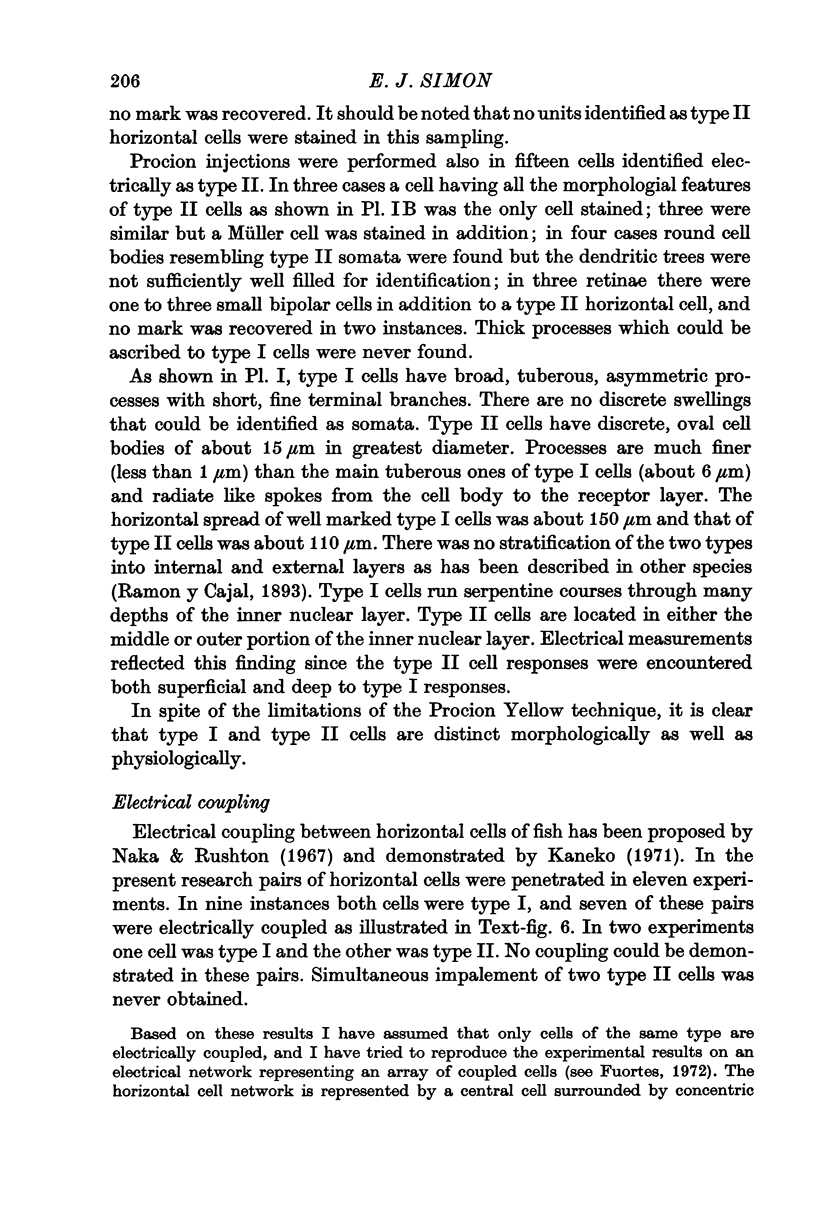
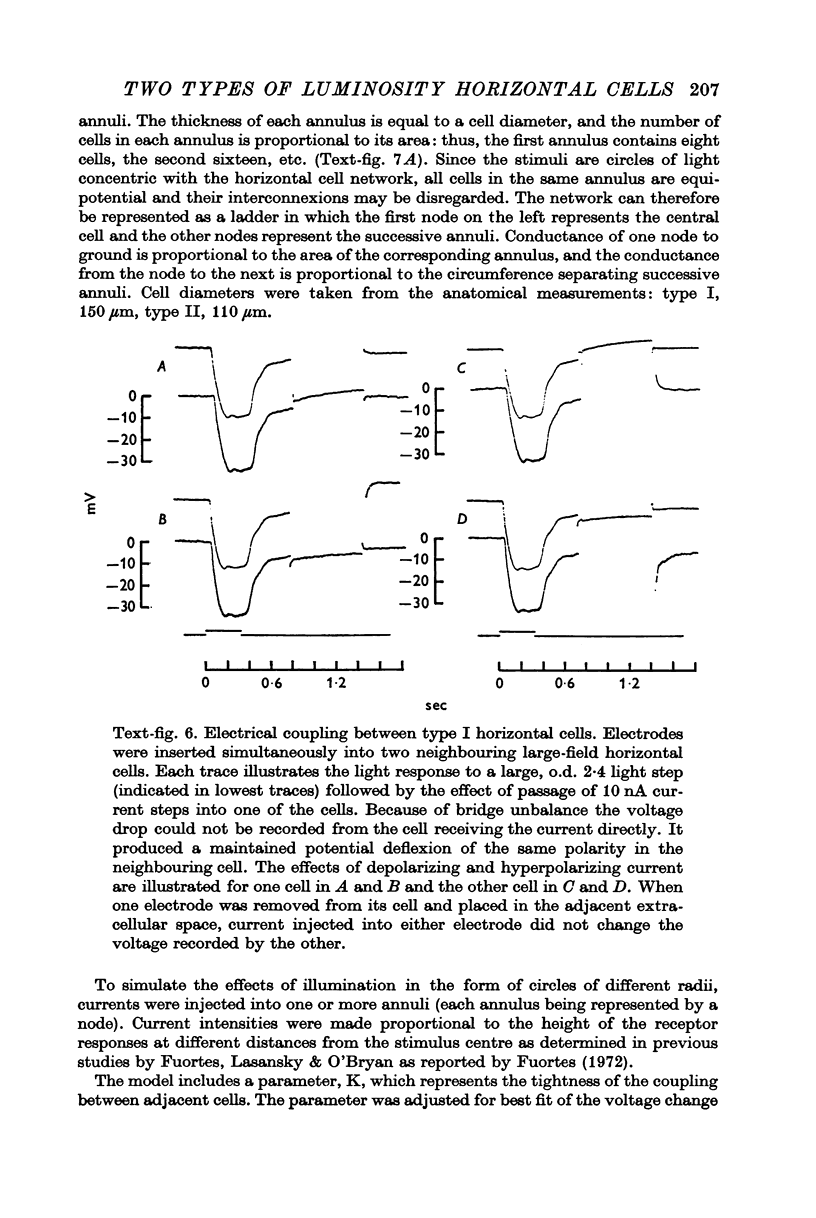
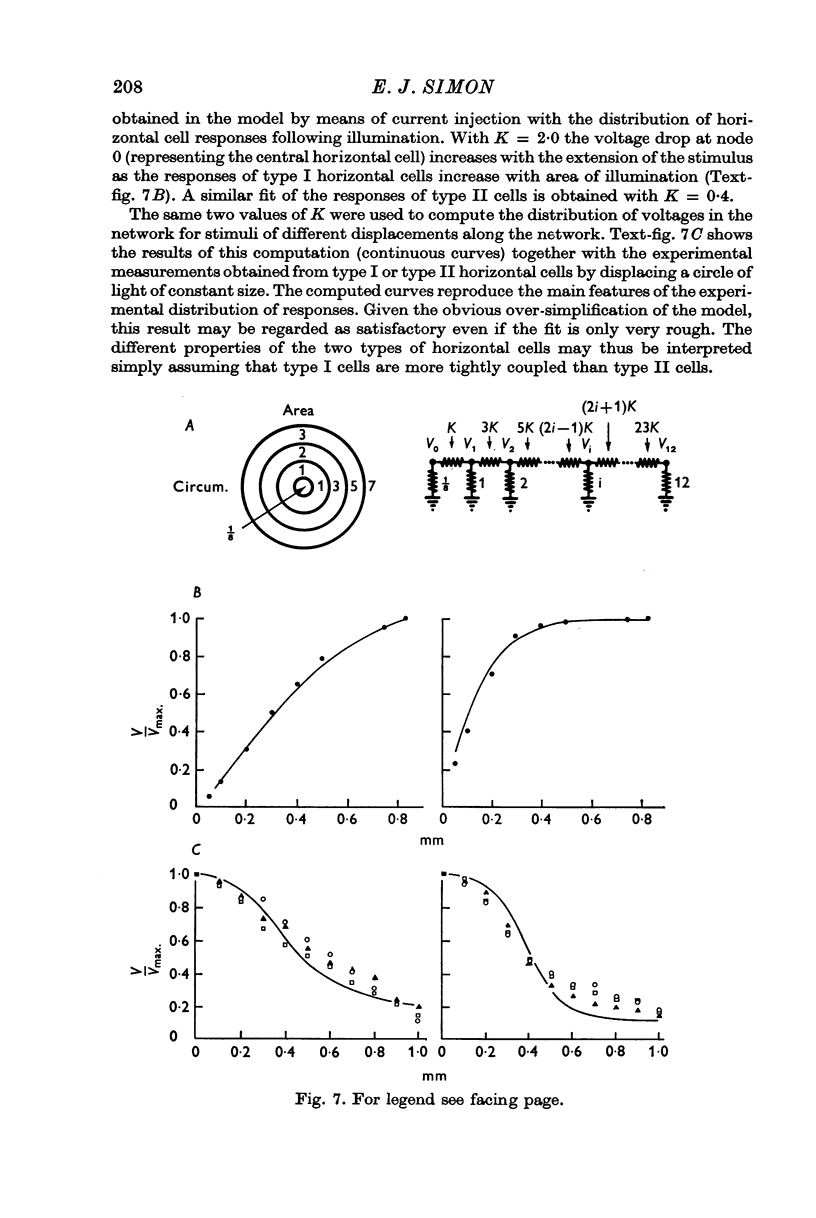

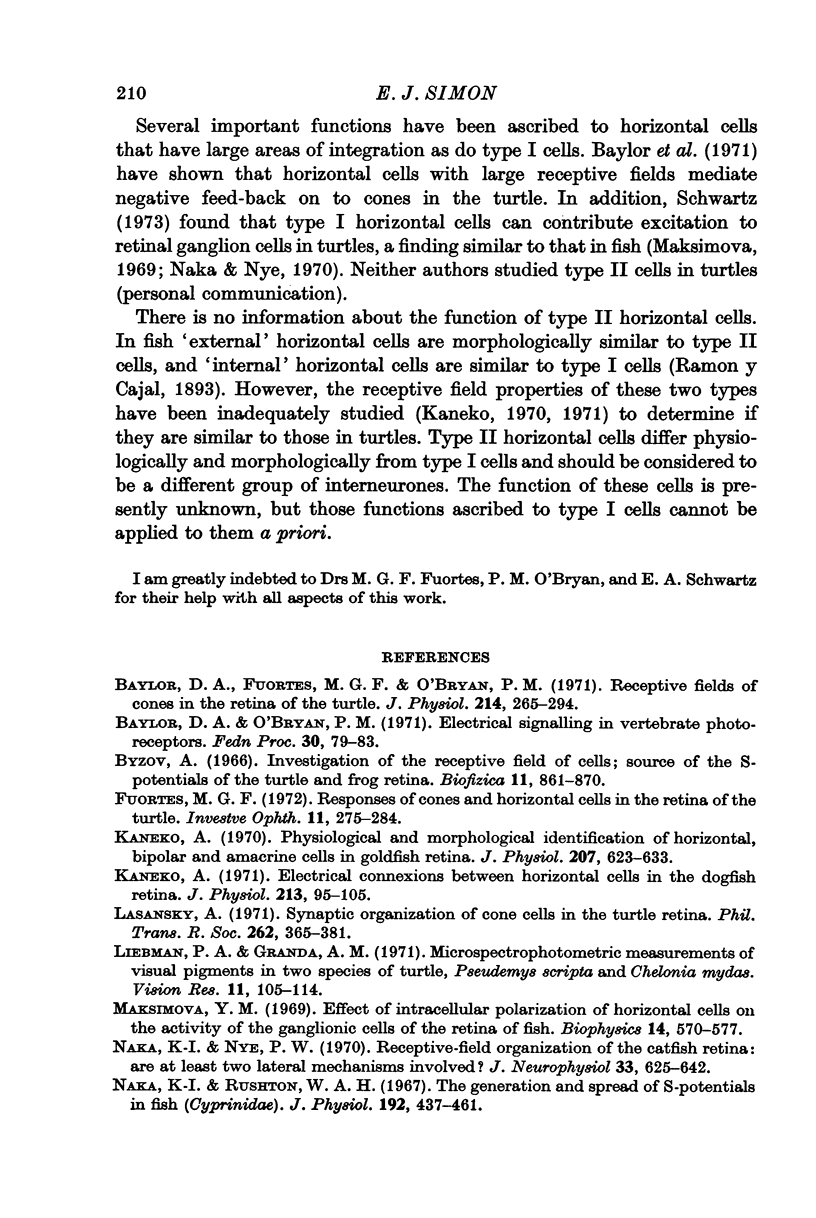
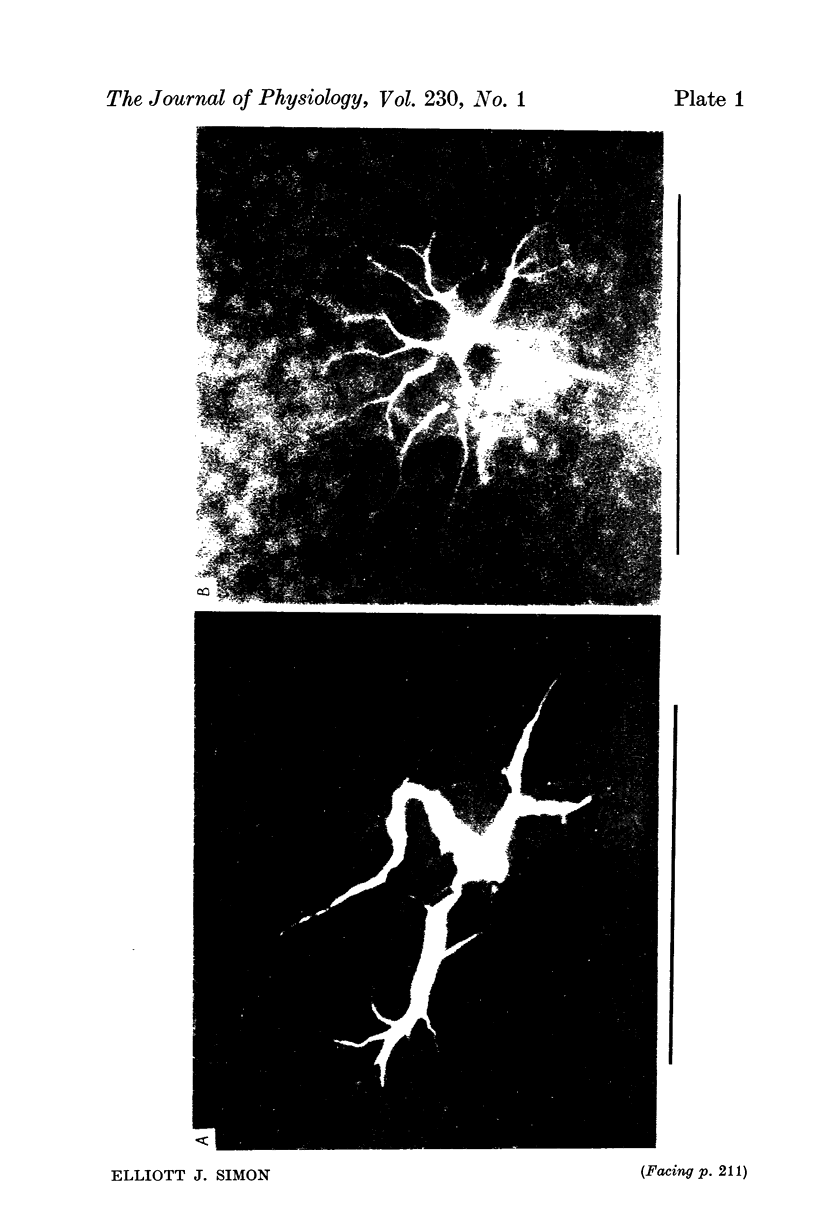
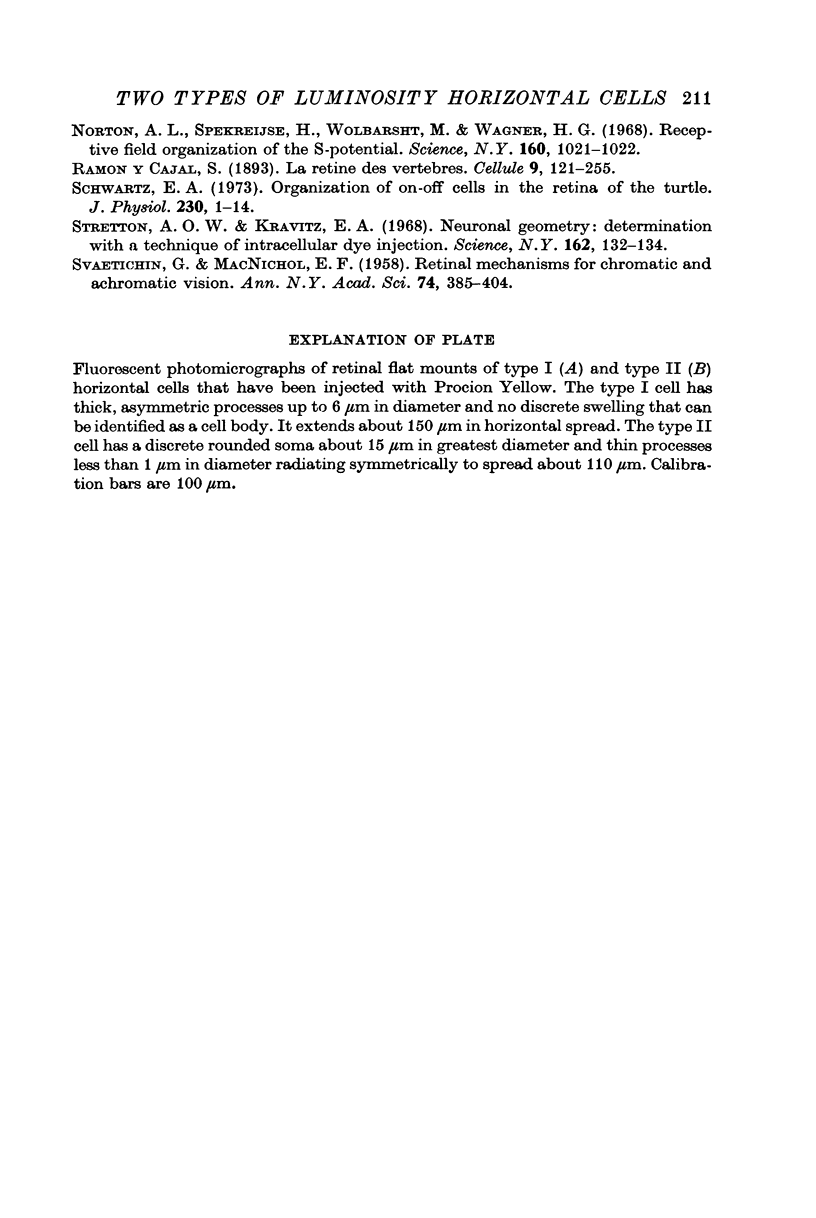
Images in this article
Selected References
These references are in PubMed. This may not be the complete list of references from this article.
- Baylor D. A., Fuortes M. G., O'Bryan P. M. Receptive fields of cones in the retina of the turtle. J Physiol. 1971 Apr;214(2):265–294. doi: 10.1113/jphysiol.1971.sp009432. [DOI] [PMC free article] [PubMed] [Google Scholar]
- Baylor D. A., O'Bryan P. M. Electrical signaling in vertebrate photoreceptors. Fed Proc. 1971 Jan-Feb;30(1):79–83. [PubMed] [Google Scholar]
- Fuortes M. G. Responses of cones and horizontal cells in the retina of the turtle. Invest Ophthalmol. 1972 May;11(5):275–284. [PubMed] [Google Scholar]
- Kaneko A. Electrical connexions between horizontal cells in the dogfish retina. J Physiol. 1971 Feb;213(1):95–105. doi: 10.1113/jphysiol.1971.sp009370. [DOI] [PMC free article] [PubMed] [Google Scholar]
- Kaneko A. Physiological and morphological identification of horizontal, bipolar and amacrine cells in goldfish retina. J Physiol. 1970 May;207(3):623–633. doi: 10.1113/jphysiol.1970.sp009084. [DOI] [PMC free article] [PubMed] [Google Scholar]
- Liebman P. A., Granda A. M. Microspectrophotometric measurements of visual pigments in two species of turtle, Pseudemys scripta and Chelonia mydas. Vision Res. 1971 Feb;11(2):105–114. doi: 10.1016/0042-6989(71)90227-6. [DOI] [PubMed] [Google Scholar]
- Naka K. I., Nye P. W. Receptive-field organization of the catfish retina: are at least two lateral mechanisms involved? J Neurophysiol. 1970 Sep;33(5):625–642. doi: 10.1152/jn.1970.33.5.625. [DOI] [PubMed] [Google Scholar]
- Naka K. I., Rushton W. A. The generation and spread of S-potentials in fish (Cyprinidae). J Physiol. 1967 Sep;192(2):437–461. doi: 10.1113/jphysiol.1967.sp008308. [DOI] [PMC free article] [PubMed] [Google Scholar]
- Norton A. L., Spekreijse H., Wolbarsht M. L., Wagner H. G. Receptive field organization of the S-potential. Science. 1968 May 31;160(3831):1021–1022. doi: 10.1126/science.160.3831.1021. [DOI] [PubMed] [Google Scholar]
- SVAETICHIN G., MACNICHOL E. F., Jr Retinal mechanisms for chromatic and achromatic vision. Ann N Y Acad Sci. 1959 Nov 12;74(2):385–404. doi: 10.1111/j.1749-6632.1958.tb39560.x. [DOI] [PubMed] [Google Scholar]
- Schwartz E. A. Organization of on-off cells in the retina of the turtle. J Physiol. 1973 Apr;230(1):1–14. doi: 10.1113/jphysiol.1973.sp010171. [DOI] [PMC free article] [PubMed] [Google Scholar]
- Stretton A. O., Kravitz E. A. Neuronal geometry: determination with a technique of intracellular dye injection. Science. 1968 Oct 4;162(3849):132–134. doi: 10.1126/science.162.3849.132. [DOI] [PubMed] [Google Scholar]



